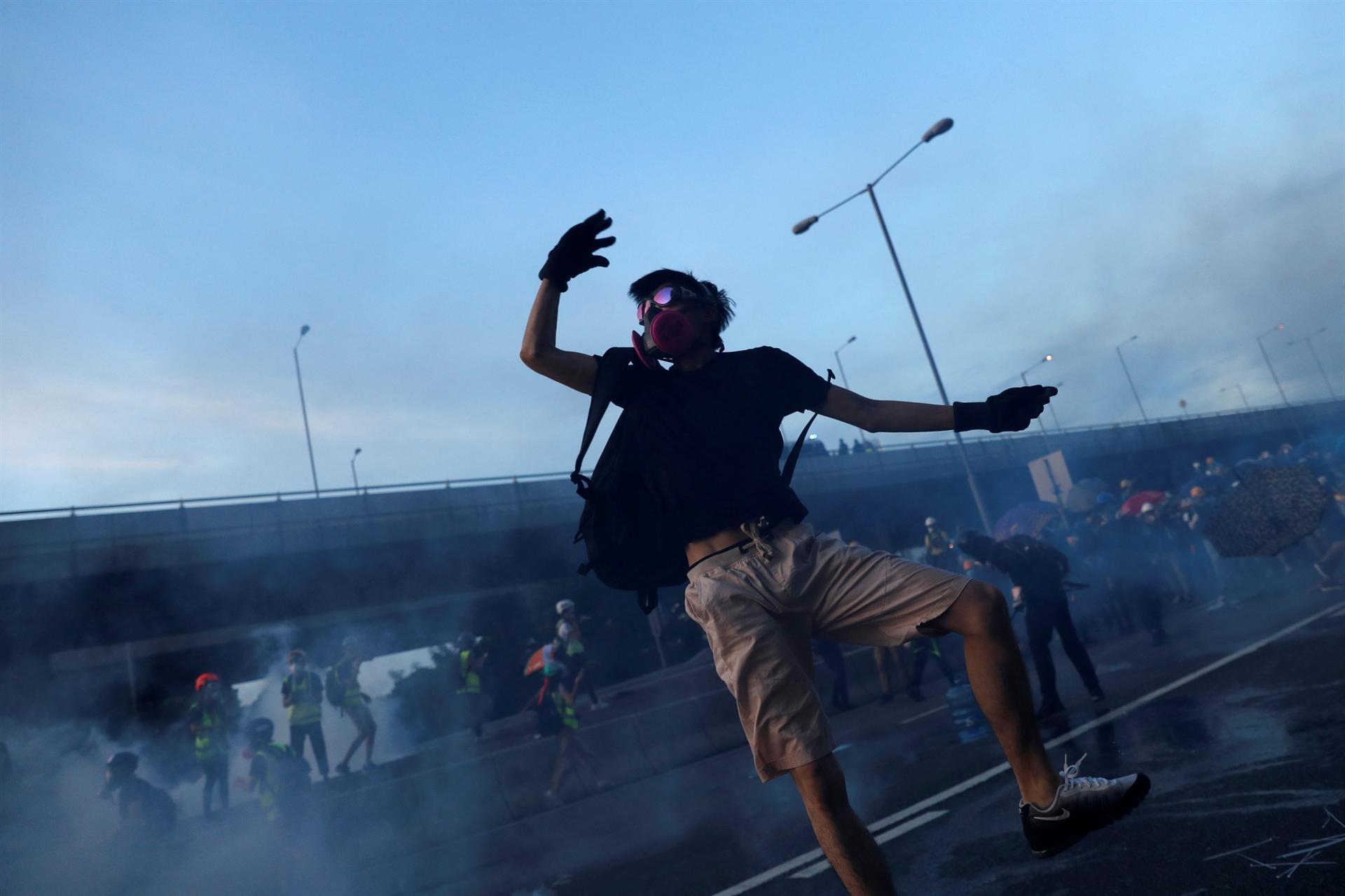
Hong Kong police clashed with thousands of protesters on July 28, as they sought to defend China's main representative office from crowds seething over what many see as an increasing cycle of violence against them.
Protests over the past two months spearheaded by anti-government activists against a proposed bill that would allow people to be extradited from the city to stand trial in courts in mainland China have grown increasingly violent.
A march on Saturday against an assault the previous weekend by suspected triad gang members ended in violent turmoil as riot police waded in to disperse crowds.
On Sunday, a peaceful gathering in a park in the city's central business district rapidly morphed into a march, as tens of thousands of black-clad protesters set off in several directions, clogging up major thoroughfares.
Thousands of people headed east, towards the shopping district of Causeway Bay, while another large contingent headed west, towards the Chinese government's representative office, known as the Central Government Liaison Office.
There, hundreds of riot police blocked activists from advancing towards the building, which had been heavily fortified with barricades after it was surrounded and defaced a week earlier. A clear plastic shield had been erected around a national emblem above its front doors.
As the crowds surged, hundreds of riot police with shields advanced, firing rounds of tear gas, rubber bullets and sponge grenades - a crowd-control weapon - at protesters, sending clouds of acrid, burning smoke through the streets.
Some protesters were on their knees choking as ambulances raced to take away the injured.
The mostly young activists in hard hats, gas masks and body armor dug in, dismantling street signs and fences which they used to form makeshift barricades to slow police advances.
Many hit metallic surfaces with sticks to create an ominous drum beat that echoed down the streets.
China's Liaison Office, a potent symbol of Beijing's rule over the city since Hong Kong returned from British to Chinese rule in 1997, has become a target for growing ranks of increasingly emboldened youngsters, angry at China's tightening grip on the city's freedoms.
Under a "one country, two systems" formula instituted as part of China's sovereignty, the city was promised wide-ranging freedoms denied citizens in mainland China.
"We call this Hong Kong's age of revolution," said a masked protester who called himself K Lee. "This movement has been sparked by China's refusal to respect Hong Kong's freedoms, and the failure of authorities to listen to the people's voice."
After multiple weekends of unrest, the protests have continued to draw large and apparently growing ranks of protesters in increasingly violent stand-offs.
Protesters responded to police with bricks, eggs and sling shots, as well as home-made gas canisters and paint balls.